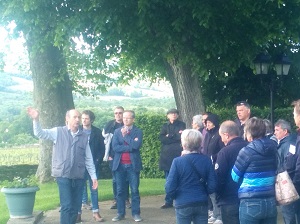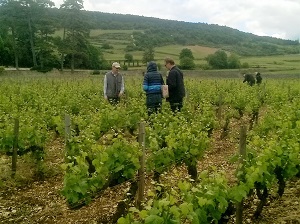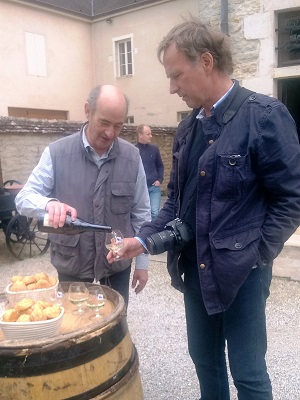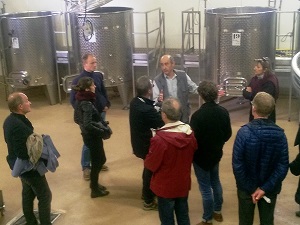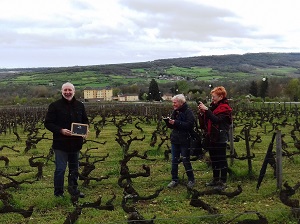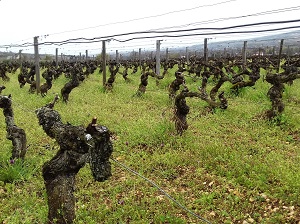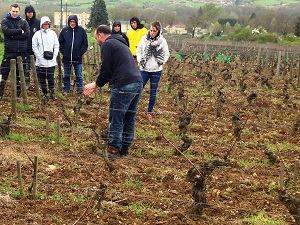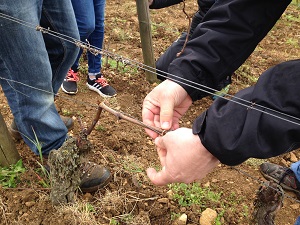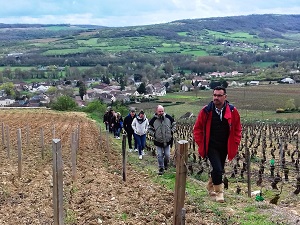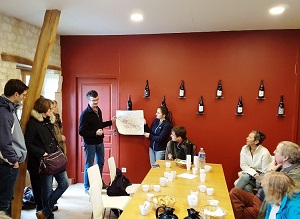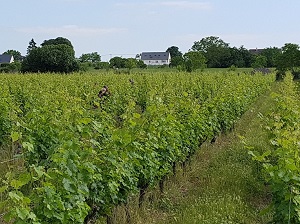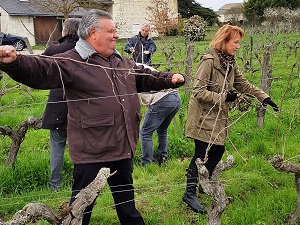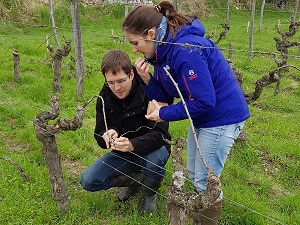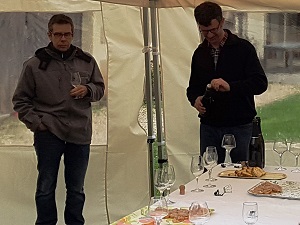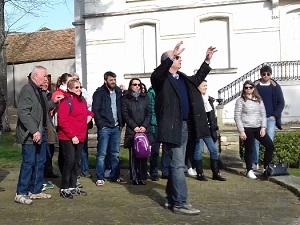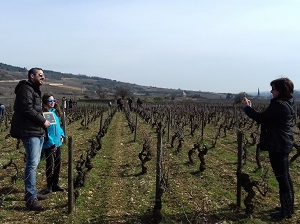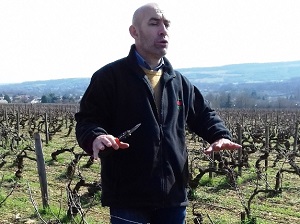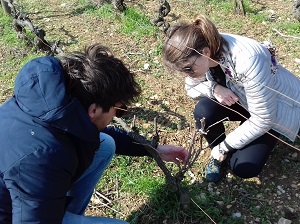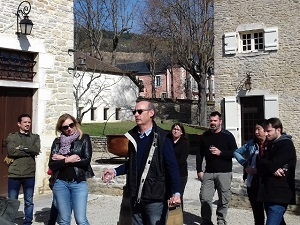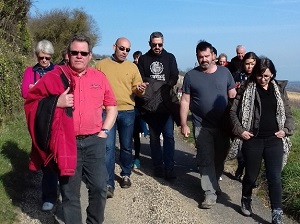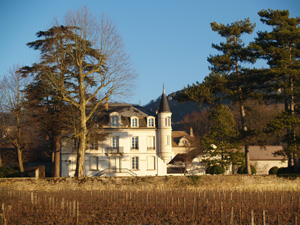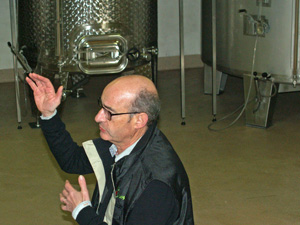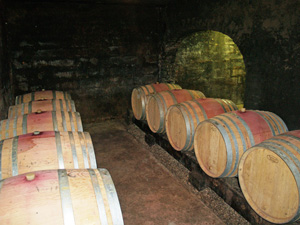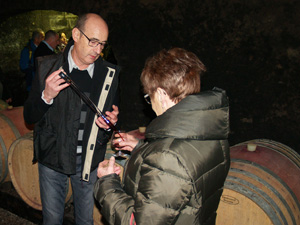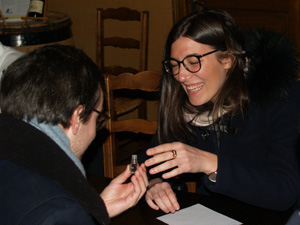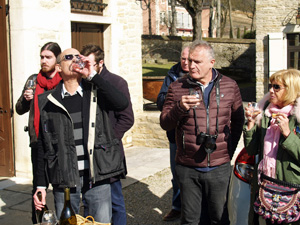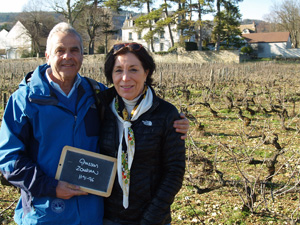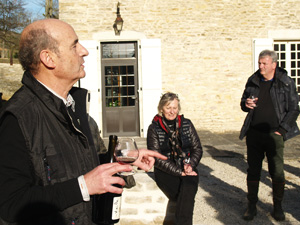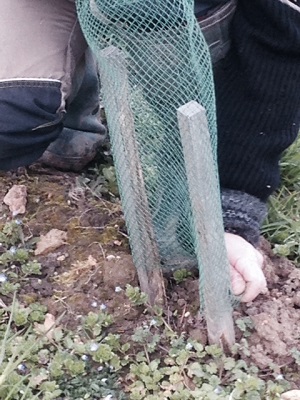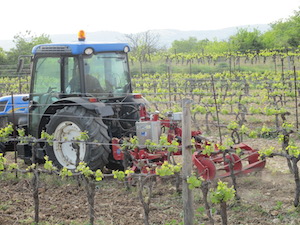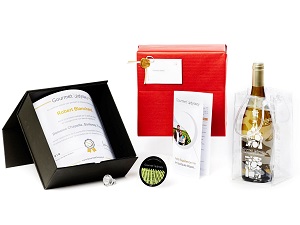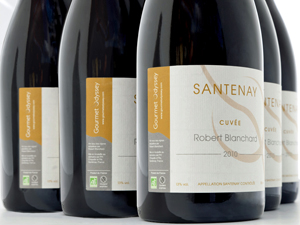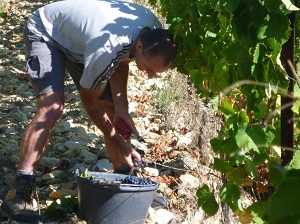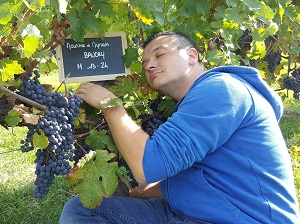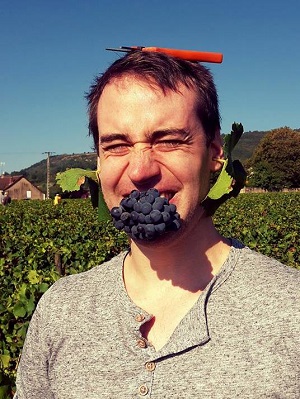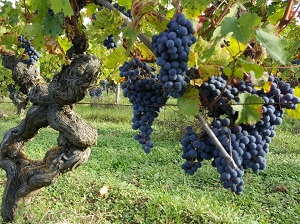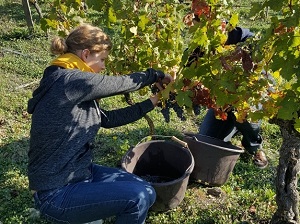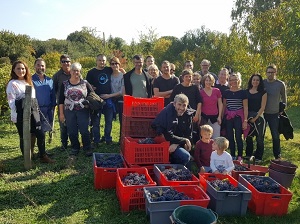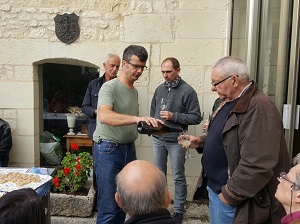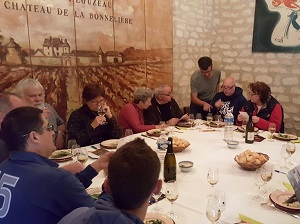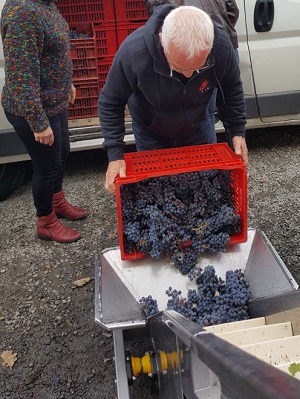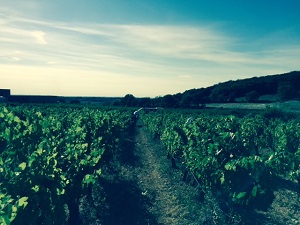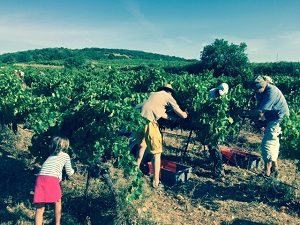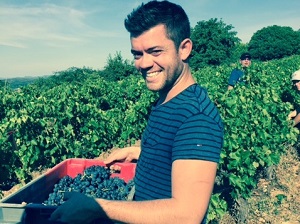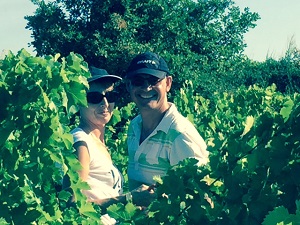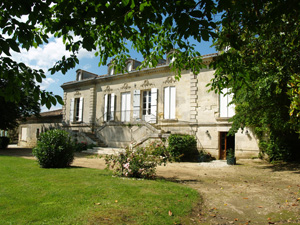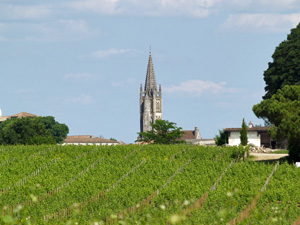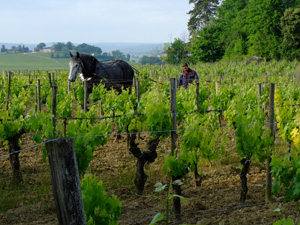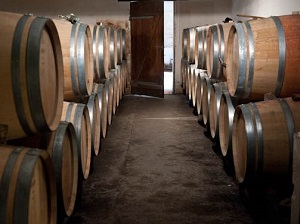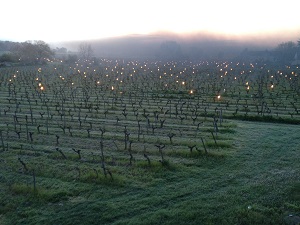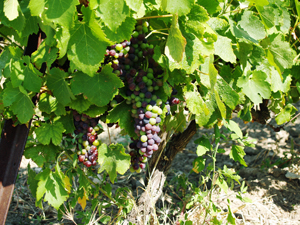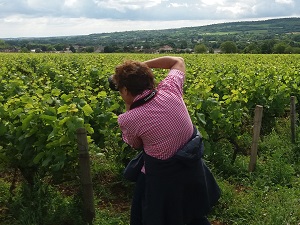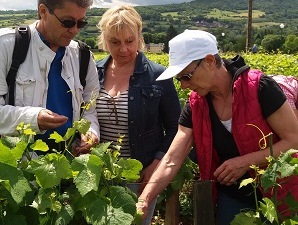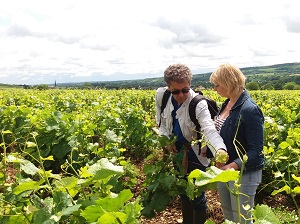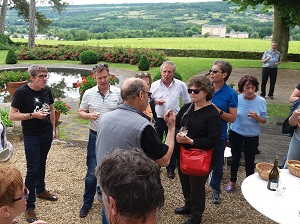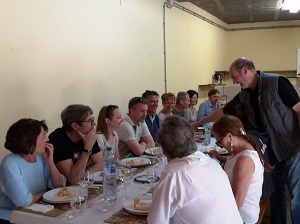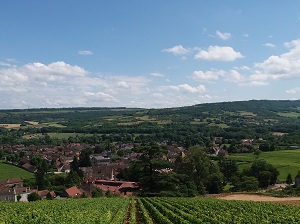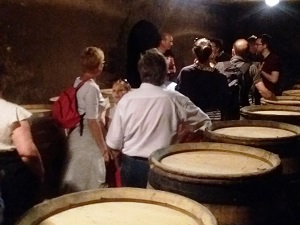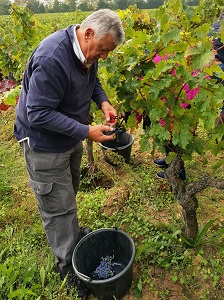The vines have also been enjoying the glorious weather that we have been having for the past few weeks and have been growing rapidly. There’s much work to be done to keep on top as we were to discover during the Gourmet Odyssey Discovery Experience Day at Domaine Jean-Marc Brocard in Chablis last Saturday.
After the introductions we set out into the vineyard. Here we learnt about all of the work that has been carried out in the vineyard since the last harvest. Arnaud showed us how the vines had been pruned and de-budded, and also explained how the soil has been worked. The winery is the largest organic and biodynamic winery in Chablis, so we also spent quite a lot of time discussing the differences between organic, biodynamic and conventional wine-growing.
With the recent growth spurt of the vines, there are currently two main tasks to do. One is to trim the branches on the sides and tops of the vines. This is done using a special cutter that is attached to the front of the tractor . We watched a tractor in action on the adjacent vine plot, and the driver then stopped to give us a demonstration of the versatility of this tractor, which can be fitted with different tools to plough, treat the vines, or even harvest the grapes.
The other task of the moment is more manual, and involves raising the training wires to support the weight of the foliage and future grapes, and to better space out the vines. Arnaud had left us a plot to work on, and after receiving our instructions, we rolled up our sleeves and got stuck in! In twos, one either side of the vine row, we unclipped the two top training wires, raised them up to the final level, and then re-clipped them together.
On our way back, we made sure that each of the branches were in between the training wires. This will prevent them from being damaged by the passing tractors and becoming entangled with the opposite vines.
We then returned to the winery for a well-earned wine tasting. Anne-Laure served us a Petit Chablis 2015, Chablis Sainte-Claire 2015, and a Chablis Premier Cru Butteaux 2014. Over lunch, prepared on-site by Julie, a great local caterer, we enjoyed a Chablis Vielles Vignes 2015 and a Chablis Saint-Anne 2004 from a magnum to see how the Sainte Claire wine that is chosen for the Gourmet Odyssey Wine Experience can age over time.
In the afternoon we visited the Sainte-Claire vineyard to meet our adopted vines, and take a few pictures with them! They too were in fine fettle, and looking great. They have just finished flowering, and are said to be at the peppercorn stage where the grapes are starting to take shape, and we can see the bunches forming. The grapes will increase in size over the next few weeks, before the vines will concentrate their energy on ripening them and producing the sugar needed to ferment and create the wine.
The day ended with a visit of the fermentation hall where the wines from last year are ageing. They have finished their fermentation and are now resting on their fine lees, until they will be ready for bottling.
And so we leave the vines to bring the grapes to maturity over the coming weeks. We’ll next be back for the harvest, which although still too early to say when, looks like to be slightly earlier than usual. But that depends on the weather to come. We hope for dry, sunny weather, interspersed with a few rain showers that are followed by sun and wind. That would be perfect!



